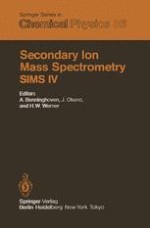1984 | OriginalPaper | Chapter
Quantitative Depth Profiling of B and P in Borophosphosilicate Glass
Author : P. K. Chu
Published in: Secondary Ion Mass Spectrometry SIMS IV
Publisher: Springer Berlin Heidelberg
Included in: Professional Book Archive
Activate our intelligent search to find suitable subject content or patents.
Select sections of text to find matching patents with Artificial Intelligence. powered by
Select sections of text to find additional relevant content using AI-assisted search. powered by
Borophosphosilicate glass (BPSG) is used in the semiconductor industry for two purposes: (1) as a top passivation layer on electronic devices and (2) as an intermetal dielectric (typically between aluminum and polysilicon) [1,2]. The advantages of BPSG over undoped Si02 is its ability to reflow within device-compatible temperature ranges [3,4] and its formation of better aluminum contact step coverage [5]. In addition, the presence of phosphorus in the passivation layer serves to getter impurities and minimizes the penetration of alkali metals into the device [6]. Although these advantages are significant, the high P concentration in BPSG, coupled with its high porosity and hygroscopicity (related to P contents), is a major cause of corrosion of aluminum runs in devices [7,8]. As a consequence, it is necessary to have a thin phosphorus free glass layer between the BPSG and A1.
